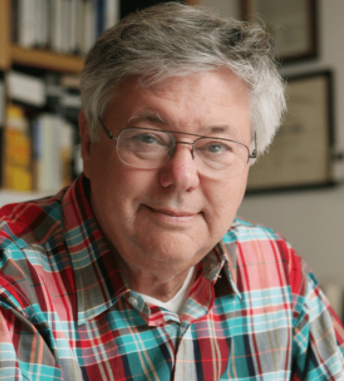
By: SAMIA AFSAR
“Science is a nasty four-letter word called luck,” said renowned physician-scientist and Nobel Prize winner Michael Brown. Brown, whose research on cholesterol led to the development of the cholesterol lowering pharmaceutical, statin, credited scientific discoveries to luck in a virtual panel discussion hosted by the CUNY Graduate Center on Wednesday night.
“If any scientist tells you that luck played no role in their major discoveries, then that scientist is not telling the truth,” said Brown.
Kevin Gardner, the director of the Structural Biology Initiative at the Advanced Science Research Center at the Graduate Center, was also in attendance to discuss how Brown’s research led to the development of the widely available life-saving drug, statin.
Brown’s work began in the 1960s at the National Institute of Health (NIH) with his scientific partner of over 50 years, Joseph Goldstein, where under a fellowship at the NIH, Brown and Goldstein met with a six-year-old girl who launched their research on cholesterol.
“There was a six-year-old girl and her eight-year-old brother, who both had several heart attacks and were, in fact, quite ill from coronary heart disease,” said Brown. “The level of cholesterol in their bodies was ten times above normal, and we have to remember that at the time nobody really knew anything about how the level of cholesterol in the blood was controlled,” he added.
Through working with the siblings, in 1973 Brown and Goldstein discovered the Ldl receptor in cells that take in cholesterol and clarified how the conversion of cholesterol is regulated by our genes and other substances. However, their research raised a deeper and more vital question – how can these findings be used to develop a drug that lowers cholesterol levels?
“In our case, luck came about in the shape of a Japanese scientist named Akira Endo,” said Brown.
During this time, Endo was working at the Sancho Drug Company in Tokyo, searching for small molecules that would block the key enzyme in the production of cholesterol. Unbeknownst to him, Endo had found the molecule responsible for the first statin.
“He had read our work about LDL receptors, but he didn’t put the two things together, so we contacted and collaborated with him,” said Brown.
The first statin was approved by the FDA in 1987 and is now taken by 200 million people worldwide suffering from high cholesterol. Despite his talk about luck, Brown also went on to attribute the development of statin to protracted industriousness.
“Each summer we take summer students and at the end of their experience at the laboratory I always ask them what the biggest surprise was, and they always say ‘I had no idea science took so many people and that you guys work in teams, because that’s not how science is taught,” said Brown. “The average student thinks a scientist gets a brilliant idea, goes into a trance, doesn’t experiment, and goes to Stockholm, but the fact of the matter is that there’s a lot of hard work involved,” he added.
Brown was awarded the Nobel Prize in Physiology or Medicine with Goldstein in 1985 for describing the regulation of cholesterol metabolism.
